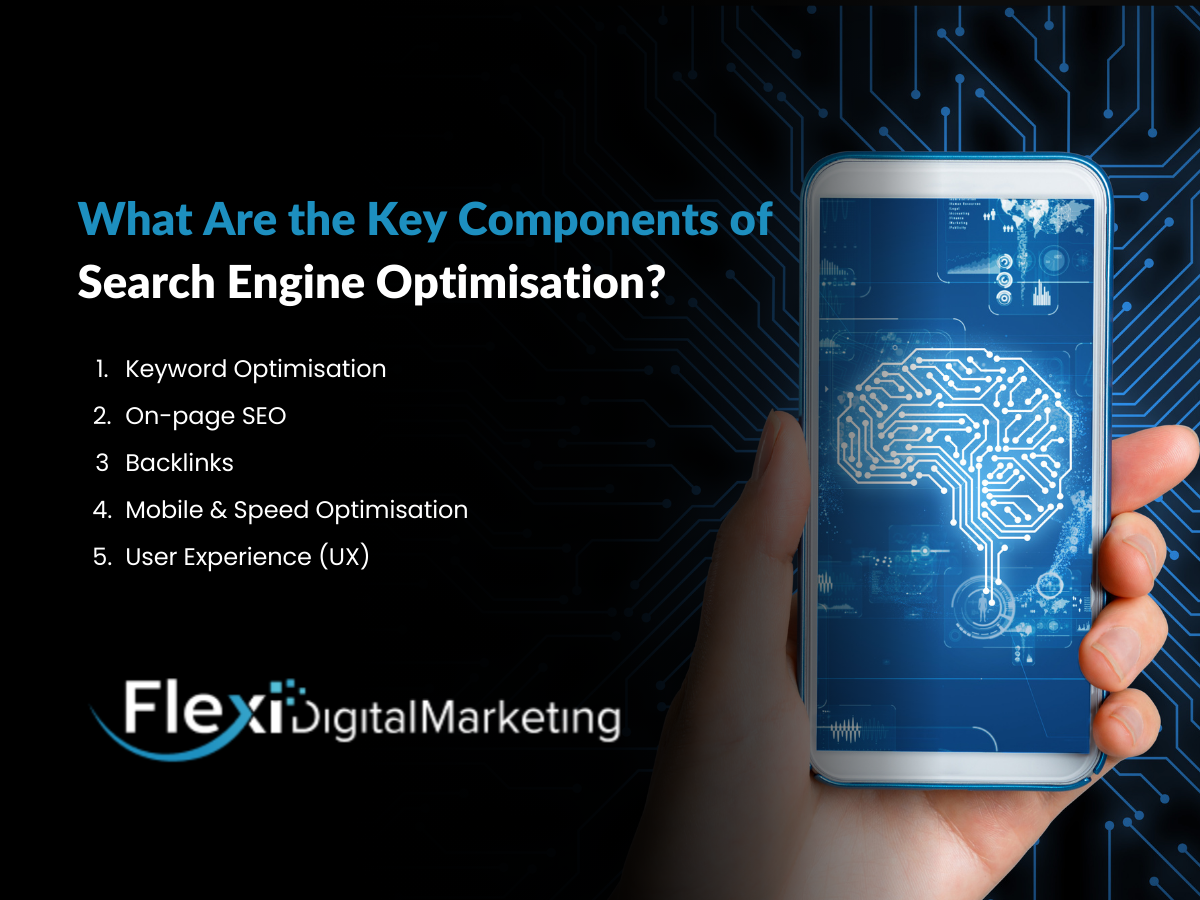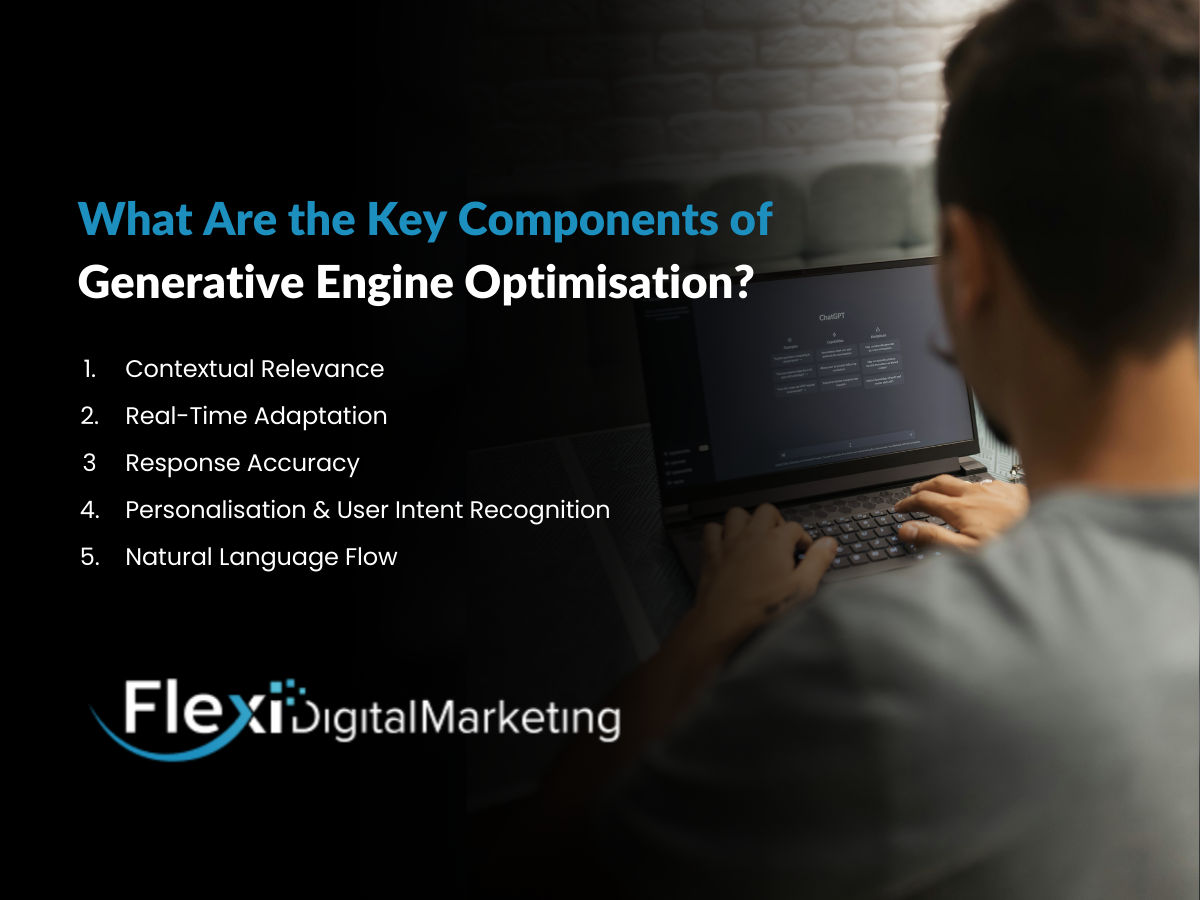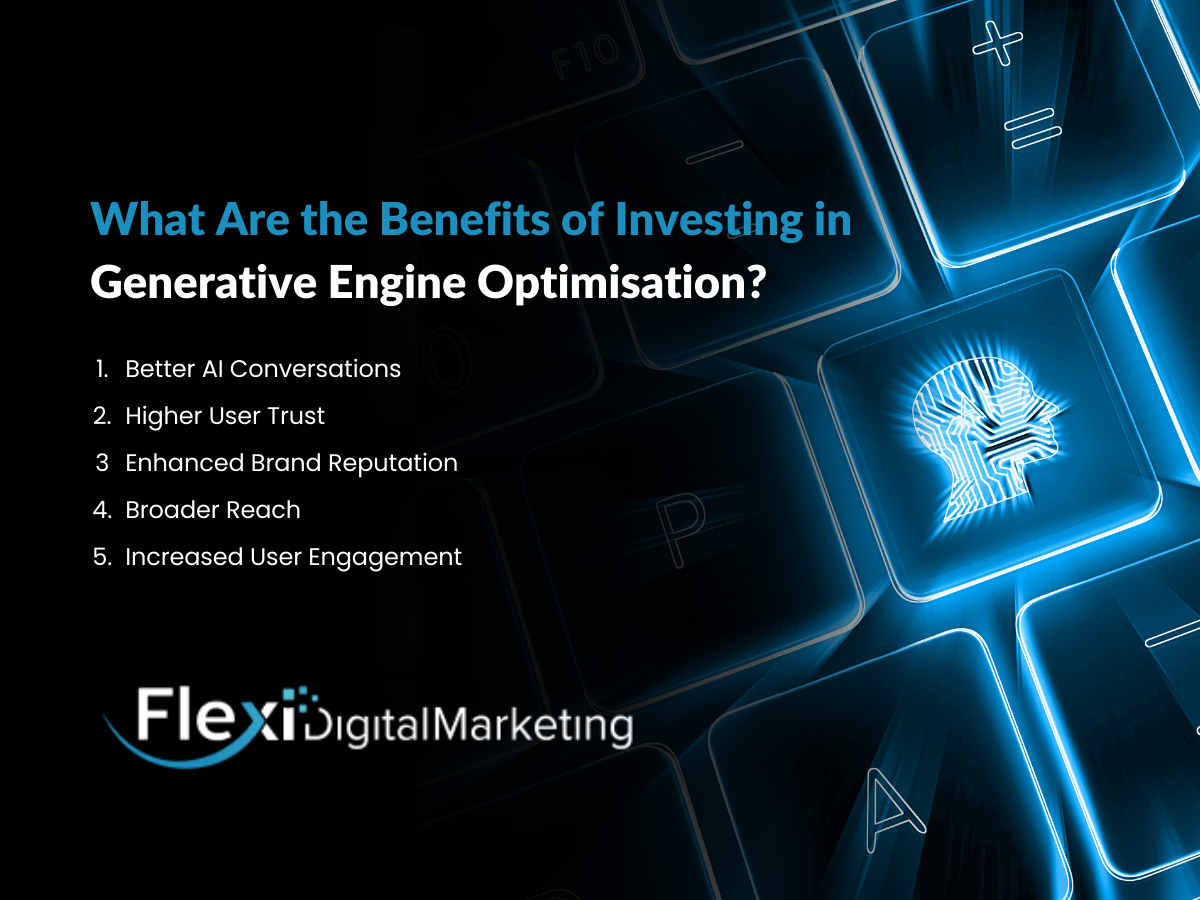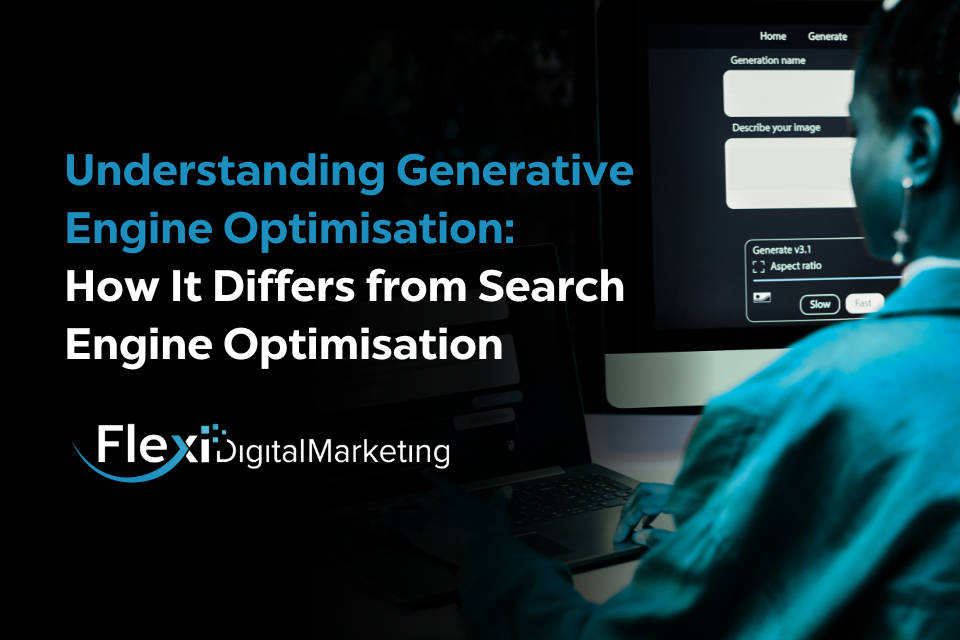You’ve probably heard of Search Engine Optimisation (SEO), but have you come across Generative Engine Optimisation (GEO)? While both aim to optimise content for better visibility and engagement, they operate in different environments and use distinct strategies. SEO focuses on ranking content in search engine results, while GEO is about making AI-generated content more accurate, useful, and human-like in real-time interactions.
What Is Search Engine Optimisation or SEO?
Search Engine Optimisation is all about helping your website appear higher in search engine results like Google or Bing. It focuses on improving your content, technical setup, and site authority so that when someone searches for a relevant topic, your page pops up first. Mastering SEO is still one of the best ways to drive organic traffic to your site.
What Is Generative Engine Optimisation or GEO?
Generative Engine Optimisation focuses on enhancing how AI models, like ChatGPT or Copilot, generate content and respond to queries. Rather than ranking content for a search results page, GEO aims to improve the accuracy, relevance, personalisation, and natural flow of AI responses. It ensures that when users engage with AI-driven tools, the answers they receive are not only helpful but feel natural and meaningful.
What Are the Key Components of Search Engine Optimisation?
To get your site noticed, focus on key components of SEO that attract users, boost engagement, and drive more traffic. These elements make your site easier to find and more valuable to visitors.

1. Keyword Optimisation
Keywords are the bridge between what people search for and the content you provide. Choosing the right keywords ensures that your website appears in front of the right audience at the right time. Strong keyword strategy connects user intent directly to your offerings.
2. On-page SEO
On-page SEO is about making small changes to things on your website that you control like titles, headings, meta tags, and internal links. Writing clearly and laying things out neatly helps search engines understand your content better, and also makes it easier for people to use your site
3. Backlinks
Backlinks are links from trusted sites that lead to yours. Think of them as a vote of confidence that your site’s worth checking out. Link building helps you earn these links, and keeping a solid backlink profile is key to staying on top in the long run.
4. Mobile & Speed Optimisation
More than half of all web traffic comes from mobile devices these days. If your site loads slowly or looks awkward on mobile devices, visitors will leave and search engines notice. Optimising for mobile responsiveness and site speed helps retain users and boost rankings.
5. User Experience (UX)
SEO isn’t just about using the right keywords anymore. It’s about making your site easy to use. The importance of user experience can’t be overstated. It’s what keeps visitors on your site, enjoying what they find, and coming back for more.
What Are the Key Components of Generative Engine Optimisation?
To make sure AI properly understands user queries, focus on the key components of GEO. These elements help AI respond more accurately, adapt smoothly in real time, and better meet user needs.

1. Contextual Relevance
Context matters most in GEO. AI models must deeply understand what a user is asking, even if the question’s a bit unclear or worded in a different way. Optimising for contextual relevance ensures that AI responses genuinely match user needs, not just keywords.
2. Real-Time Adaptation
Generative AI isn't fixed. It learns and adjusts as the chat goes along. GEO helps replies follow the flow of the conversation so they feel more natural. It makes the AI more flexible, quicker to respond, and better at picking up on what the user really wants.
3. Response Accuracy
One wrong piece of information can quickly destroy user trust. GEO ensures that AI-generated answers are factually correct, up-to-date, and properly sourced when needed. Strong emphasis on accuracy builds confidence and keeps users coming back.
4. Personalisation & User Intent Recognition
Each user has their own unique needs, even if they’re asking similar questions. GEO helps the AI pick up on things like their tone, past inputs, or preferred styles, so it can give more personalised and relevant responses. This makes the whole AI experience feel more natural and easier to use.
5. Natural Language Flow
Generative AI must sound conversational, not robotic. GEO works to fine-tune phrasing, tone, and sentence structure, helping responses sound authentic and human-like. This natural flow boosts user engagement and satisfaction across AI platforms.
What Are the Benefits of Investing in Generative Engine Optimisation?
Investing in Generative Engine Optimisation isn’t just about staying competitive, it’s about creating smarter, more human-like AI experiences. A strong GEO strategy can transform the way users interact with your platform, building trust, loyalty, and growth.

1. Better AI Conversations
Optimised content allows AI to understand and respond more intelligently. This results in smoother, more natural interactions that feel less robotic. A well-optimised AI conversation increases engagement and user satisfaction.
2. Higher User Trust
When AI responses are accurate and personalised, users feel more confident in the platform. Trust is built through consistent, relevant, and helpful answers. Over time, this trust encourages users to return and continue interacting with the AI.
3. Enhanced Brand Reputation
Delivering a great AI experience helps businesses distinguish themselves in a crowded market. Strong AI interactions lead to a better overall perception of the brand. By meeting user expectations, companies enhance their credibility and customer loyalty.
4. Broader Reach
As AI becomes central to many services, optimising for generative engines ensures that your platform is future-proof. The more optimised your AI is, the more likely you’ll be discovered by new users. This can lead to an expanded user base and new market opportunities.
5. Increased User Engagement
AI that adapts to user needs and delivers relevant, personalised content leads to longer, more productive interactions. A responsive system keeps users engaged and encourages deeper connections. Increased engagement results in higher retention and greater satisfaction.
Comparing Generative Engine Optimisation and Search Engine Optimisation
Both Generative Engine Optimisation (GEO) and Search Engine Optimisation (SEO) focus on improving the relevance and quality of digital content, but they operate in different domains. While SEO targets increasing organic traffic and search engine rankings for websites, GEO works on optimising AI models to enhance the quality of content generation and user interaction with AI systems. Below is a comparison of the two approaches:
| Aspect | Generative Engine Optimisation | Search Engine Optimisation |
| Focus | Optimise content and AI models for better generative outputs. | Optimise websites and content to improve search rankings. |
| Optimisation Process | Fine-tuning models, prompt engineering, and training on high-quality datasets. | Keyword research, link building, technical SEO, and content updates. |
| Goal | Improve the quality, relevance, and engagement of AI-generated content. | Increase organic traffic through higher search engine rankings. |
| Technology | Artificial Intelligence (AI), Natural Language Processing (NLP), and Machine Learning (ML). | Website indexing, keyword mapping, and search engine algorithms. |
| User Journey | Users interact with AI and receive instant information. | Users click on search results and visit websites. |
Final Thoughts
SEO and GEO aren’t in competition, they’re two sides of the same coin. SEO helps people find your website, while GEO makes sure AI gives them the right answers once they get there or even before they need to search. As digital experiences keep changing, it's no longer about choosing one over the other.
A strong digital marketing solution incorporates both SEO and GEO strategies, ensuring comprehensive user engagement and satisfaction. Understanding how both work together is the real key to building trust, growing your audience, and staying ahead.
Want to get the best of both SEO and GEO? Contact us today to learn more or get support in building your strategy.


